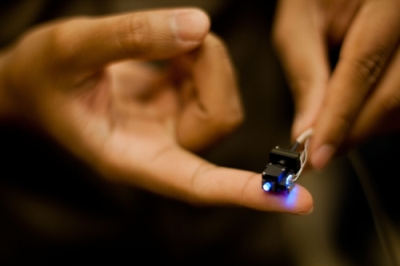Oct 11 2012
Inscopix, Inc. will announce the launch of nVista HD, an end-to-end solution for in vivo brain imaging in freely behaving mice, this weekend at Neuroscience 2012 (SfN).
 Inscopix nVista HD Miniature Microscope
Inscopix nVista HD Miniature Microscope
Based on a revolutionary miniature, integrated fluorescence microscope technology developed by Inscopix's founding team at Stanford University, nVista HD allows neuroscientists to stream live, high-definition videos of large-scale neural activity in awake, naturally behaving mice.
"The nVista HD imaging platform for the first time provides neuroscientists with the ability to visualize and study the neural mechanisms that underlie behavior, and how those mechanisms go awry leading to behavioral deficits," said Inscopix CEO Dr. Kunal Ghosh. With nVista HD researchers can leverage standard rodent behavioral assays and concurrently image activity in hundreds of individual, genetically identified neurons. The platform offers neuroscientists unparalleled experimental flexibility and enables the pursuit of entirely new scientific paradigms. nVista HD is USB-compatible and designed to be plug-and-play – no large desktop system is needed and all the necessary hardware and software are included in one compact package.
Through Inscopix's Neuroscience Early Access Program (NEAP), a select number of neuroscientists will receive advance access to the first generation of nVista HD systems. One such early adopter is the Lieber Institute for Brain Development (LIBD) at Johns Hopkins University. "LIBD is excited to be among the first recipients of nVista HD. Our investigators are specifically interested in using the systems to study neural circuit mechanisms related to the pathogenesis of schizophrenia in mouse models of the disease," remarked Daniel Weinberger, M.D., Director and CEO of LIBD and a pioneer in the development of novel approaches for the study of brain diseases such as schizophrenia.